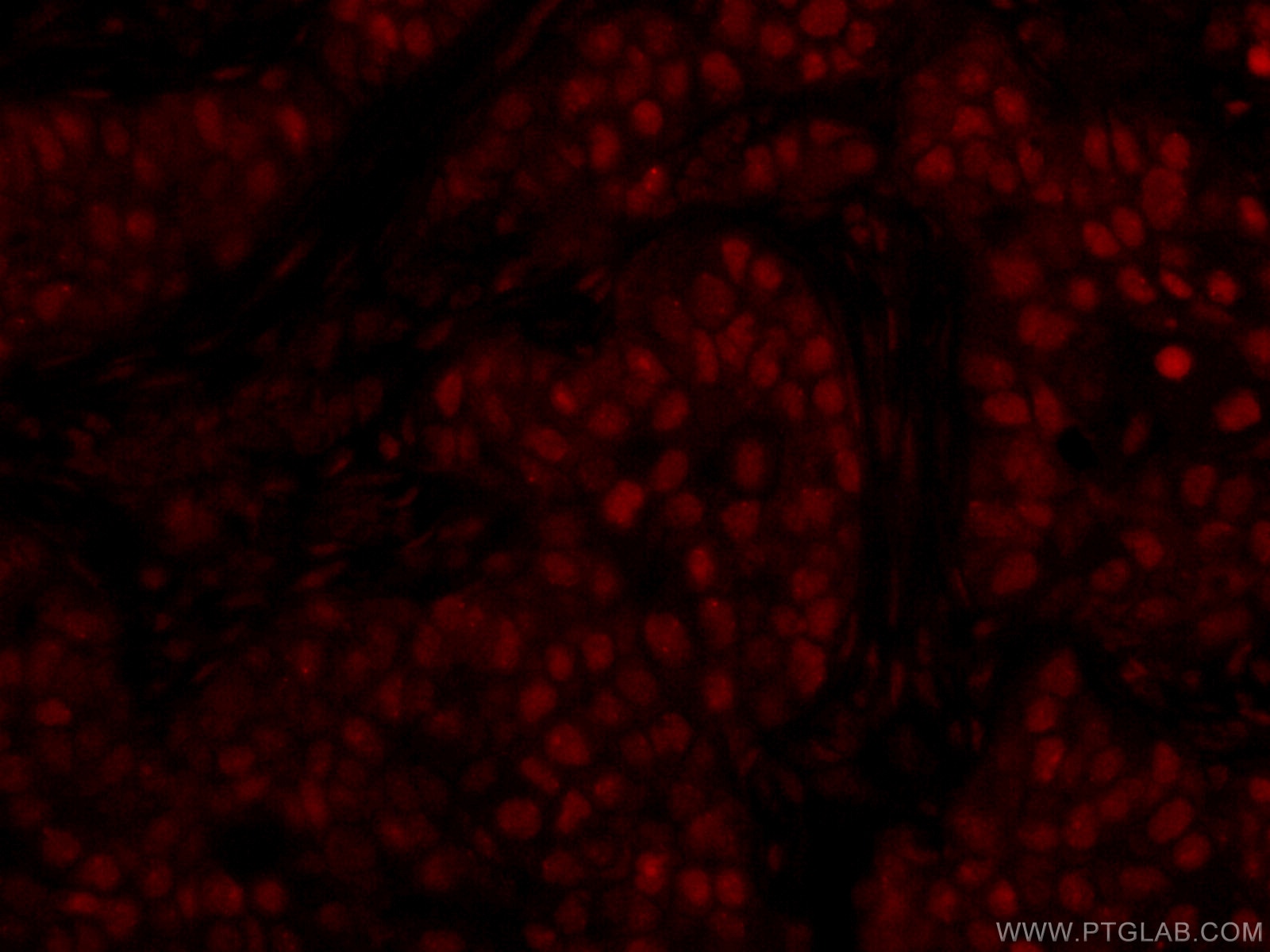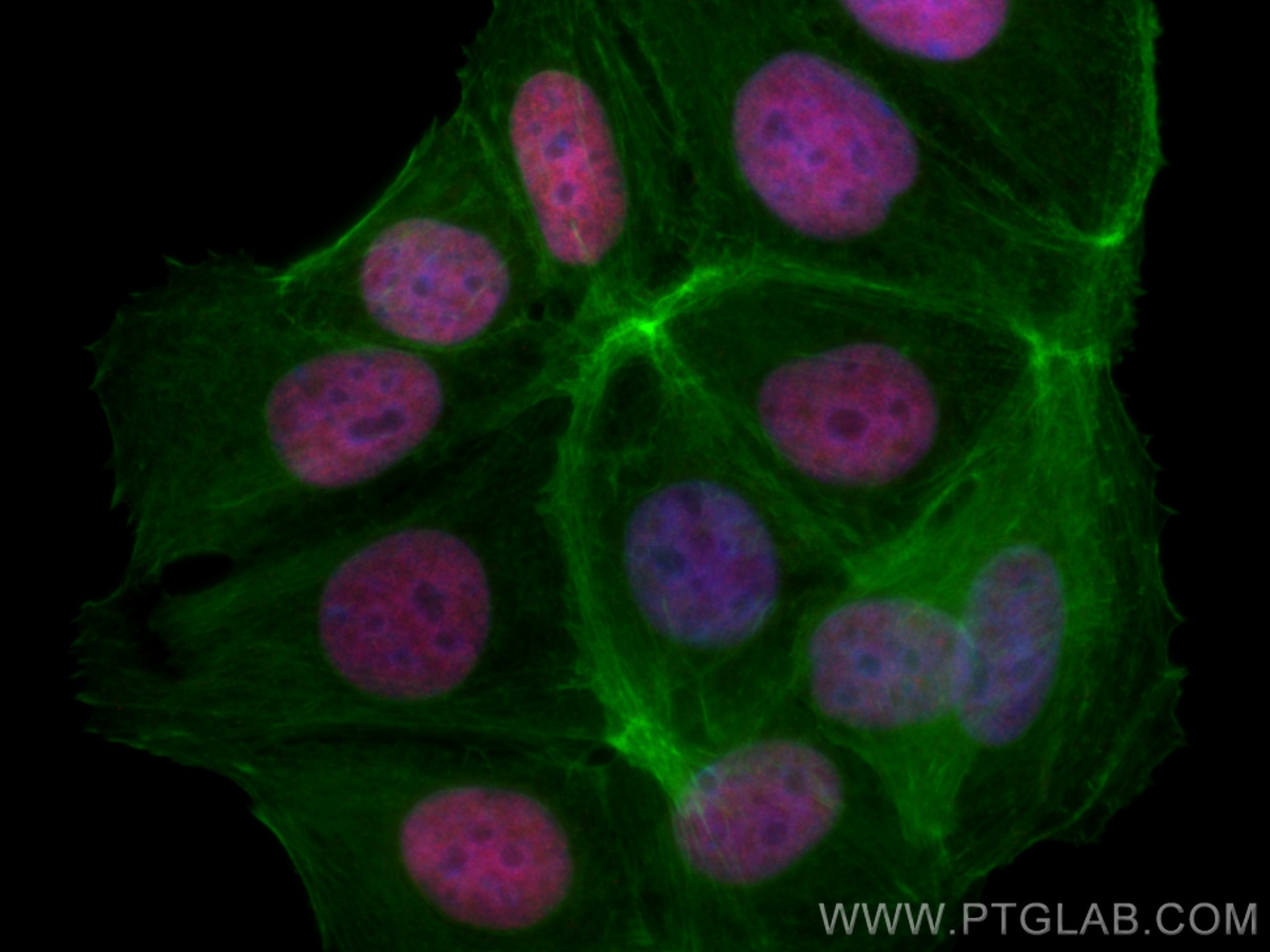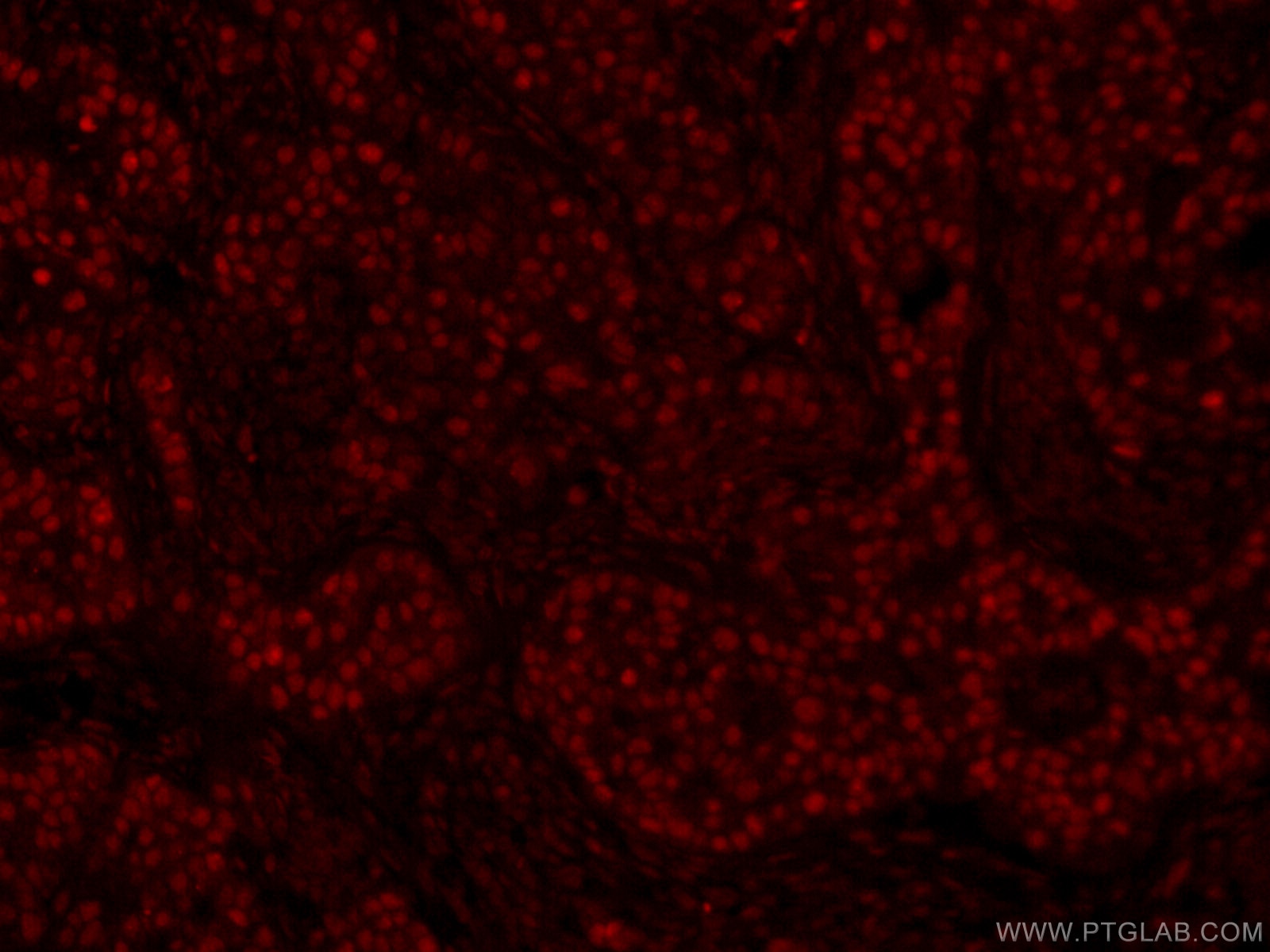Anticorps Monoclonal anti-GATA3
GATA3 Monoclonal Antibody for IF
Hôte / Isotype
Mouse / IgG2a
Réactivité testée
Humain
Applications
IF
Conjugaison
CoraLite®594 Fluorescent Dye
CloneNo.
1B11A8
N° de cat : CL594-66400
Synonymes
Galerie de données de validation
Applications testées
| Résultats positifs en IF | cellules MCF-7, tissu de cancer du sein humain |
Dilution recommandée
| Application | Dilution |
|---|---|
| Immunofluorescence (IF) | IF : 1:400-1:1600 |
| It is recommended that this reagent should be titrated in each testing system to obtain optimal results. | |
| Sample-dependent, check data in validation data gallery | |
Informations sur le produit
CL594-66400 cible GATA3 dans les applications de IF et montre une réactivité avec des échantillons Humain
| Réactivité | Humain |
| Hôte / Isotype | Mouse / IgG2a |
| Clonalité | Monoclonal |
| Type | Anticorps |
| Immunogène | GATA3 Protéine recombinante Ag0174 |
| Nom complet | GATA binding protein 3 |
| Masse moléculaire calculée | 443 aa, 48 kDa |
| Numéro d’acquisition GenBank | BC003070 |
| Symbole du gène | GATA3 |
| Identification du gène (NCBI) | 2625 |
| Conjugaison | CoraLite®594 Fluorescent Dye |
| Excitation/Emission maxima wavelengths | 588 nm / 604 nm |
| Forme | Liquide |
| Méthode de purification | Purification par protéine A |
| Tampon de stockage | PBS avec glycérol à 50 %, Proclin300 à 0,05 % et BSA à 0,5 %, pH 7,3. |
| Conditions de stockage | Stocker à -20 °C. Éviter toute exposition à la lumière. Stable pendant un an après l'expédition. L'aliquotage n'est pas nécessaire pour le stockage à -20oC Les 20ul contiennent 0,1% de BSA. |
Informations générales
GATA3 is a transcriptional factor that binds to the enhancer elements of all 4 T-cell antigen receptor genes. GATA3 is highly expressed in naive, freshly activated cells and Th2 lineage cells and thought to be necessary and sufficient for Th2 cytokine gene expression. GATA3 and TBET interfer with each other to regulate gene expression. This antibody is CL594(Ex/Em 593 nm/614 nm) conjugated.
Protocole
| Product Specific Protocols | |
|---|---|
| IF protocol for CL594 GATA3 antibody CL594-66400 | Download protocol |
| Standard Protocols | |
|---|---|
| Click here to view our Standard Protocols |




